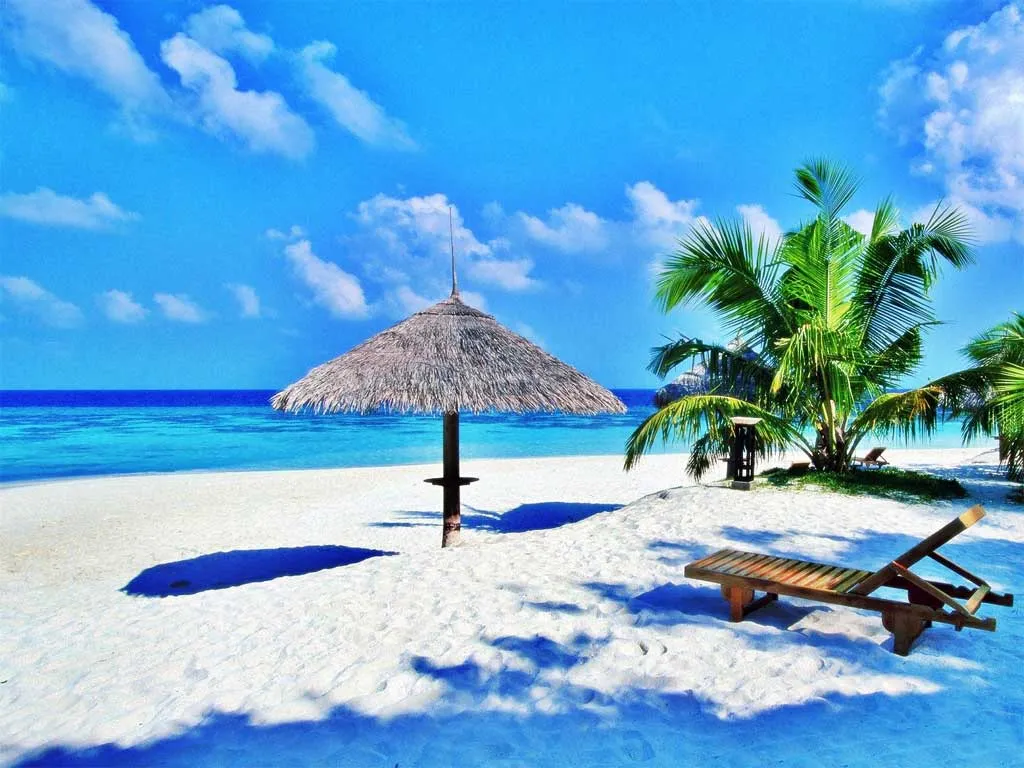
A beach is a landform along a body of water, typically an ocean or a sea, that consists of loose particles such as sand, gravel, or shingle. Beaches are formed by the action of waves and tides, which deposit and re-distribute the particles along the shoreline.
Beaches can vary in size, shape, and composition, depending on the location and the specific geological and oceanographic conditions. Some beaches are long and straight, while others are crescent-shaped or have a more complex geometry. Some beaches are made of soft, fine sand, while others are covered in coarser gravel or rocks.
Beaches are important ecosystems that provide habitat for a variety of plants and animals, such as sea turtles, shorebirds, and dune vegetation. They also play a crucial role in protecting coastal communities from the impacts of storms and erosion. Beaches are also popular recreational areas, where people can engage in activities such as swimming, surfing, sunbathing, and beachcombing.
Types
There are several different types of beaches, including:
- Sandy beaches: These are the most common type of beach, made up of sand-sized particles that are easily eroded and re-deposited by waves.
- Pebble beaches: These beaches are made up of small rocks or pebbles, which are often found in areas where there is a high concentration of sediment.
- Gravel beaches: These beaches are made up of larger rocks or gravel, which are often found in areas with high wave energy or strong currents.
- Shingle beaches: These beaches are made up of small, flat stones that are often found in areas with high wave energy or strong currents.
- Dune beaches: These beaches are located behind a line of dunes, which are hills or ridges made up of sand or other sediment.
- Estuarine beaches: These beaches are located where a river or stream flows into the ocean, and are often characterized by a mixture of sand, silt, and mud.
Formation
- Erosion: Waves and currents constantly wear down rocks and cliffs, creating sediment like sand and pebbles. This material gets transported and deposited along the shoreline, forming beaches.
- Deposition: Waves and wind carry and deposit sediment, shaping the beach's contours. Gentle waves tend to create smooth, sloping beaches, while strong waves and currents can form steeper and more dynamic shorelines.
- Wind: Wind plays a role in shaping beach features like sand dunes and ridges, influencing the movement and distribution of sand.
Ecology
- Habitat: Beaches support diverse ecosystems, including plants, animals, and microorganisms adapted to the sandy or rocky environment.
- Coastal protection: Beaches act as natural buffers against waves and storms, protecting inland areas from erosion and flooding.
- Recreation and tourism: Beaches are popular destinations for leisure activities like swimming, sunbathing, surfing, diving, and beachcombing, attracting tourists and generating economic benefits.
Threats
- Coastal erosion: Rising sea levels, storms, and human activities can accelerate coastal erosion, threatening beaches and the communities that rely on them.
- Pollution: Littering, oil spills, and other forms of pollution can harm beach ecosystems and pose health risks to people and wildlife.
- Overdevelopment: Excessive tourism and coastal development can damage the natural beauty and ecological balance of beaches.
Famous Beaches
When it comes to famous beaches, the world has an abundance to offer! It all depends on what kind of experience you're looking for and where you'd like to travel. Here are a few examples from different corners of the globe:
Iconic Beauty:
- Whitehaven Beach, Whitsunday Islands, Australia: Renowned for its pristine white silica sand and turquoise waters, it's often considered one of the most beautiful beaches on Earth.
- Navagio Beach, Zakynthos, Greece: With its dramatic shipwreck nestled in a sheltered cove, it offers stunning scenery and crystal-clear waters for swimming and snorkeling.
- Copacabana Beach, Rio de Janeiro, Brazil: Bustling with lively vibes, beachfront cafes, and iconic views of Sugarloaf Mountain, this urban beach is a must-visit for experiencing the energy of Rio.
Adventure seekers:
- Waikiki Beach, Honolulu, Hawaii: A surfer's paradise with consistent waves and a vibrant beach culture, Waikiki also offers excellent snorkeling and scenic hikes.
- Bondi Beach, Sydney, Australia: Renowned for its strong surf and lively atmosphere, Bondi is a popular spot for swimming, surfing, and people-watching.
- Maya Bay, Phi Phi Islands, Thailand: Made famous by the movie "The Beach," this picturesque bay with towering cliffs and emerald waters is a stunning destination for kayaking and exploring caves.
Tranquil getaways:
- Anse Source d'Argent, Seychelles: With its turquoise waters, granite boulders, and lush vegetation, this beach offers a secluded paradise for swimming, sunbathing, and romantic escapes.
- Trunk Bay, St. John, US Virgin Islands: This protected bay boasts calm waters, pristine white sand, and excellent snorkeling opportunities within the Virgin Islands National Park.
- Tulum Beach, Riviera Maya, Mexico: Surrounded by Mayan ruins and turquoise waters, Tulum offers a unique blend of history, stunning scenery, and eco-friendly resorts.
